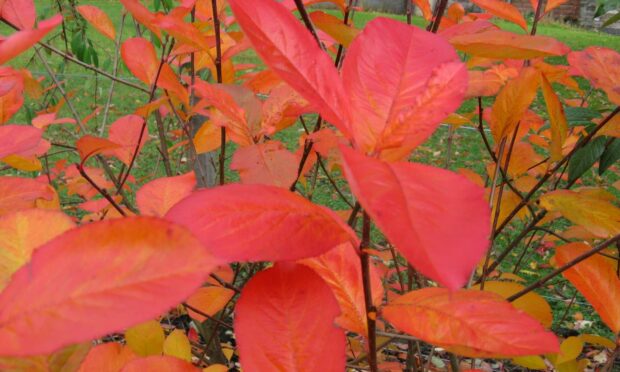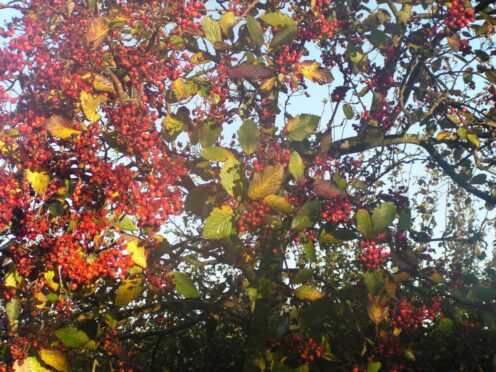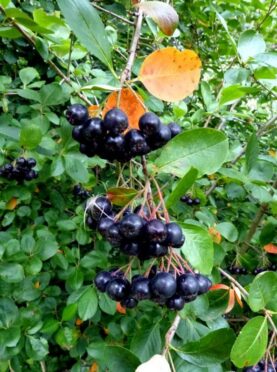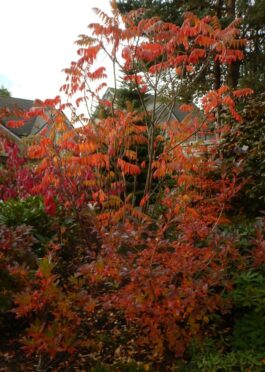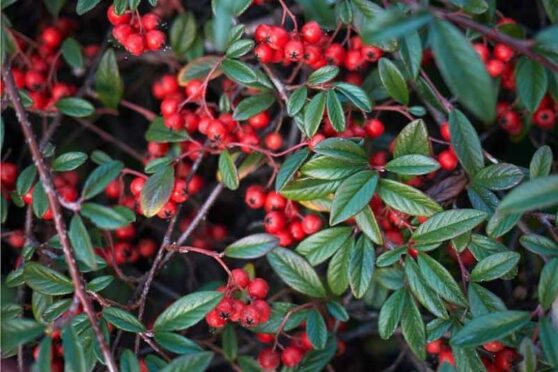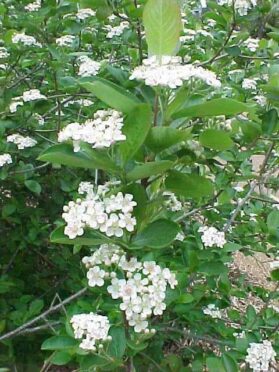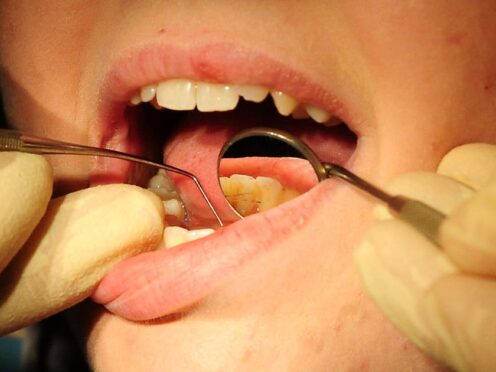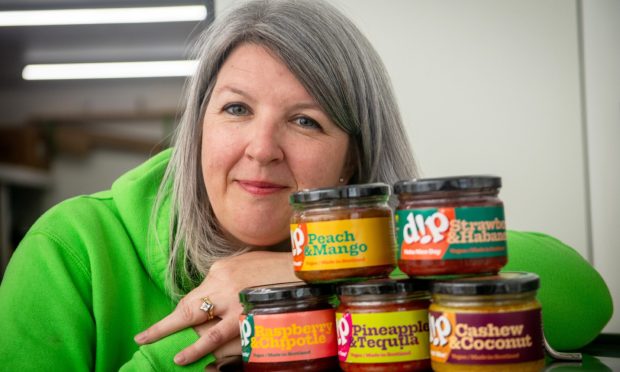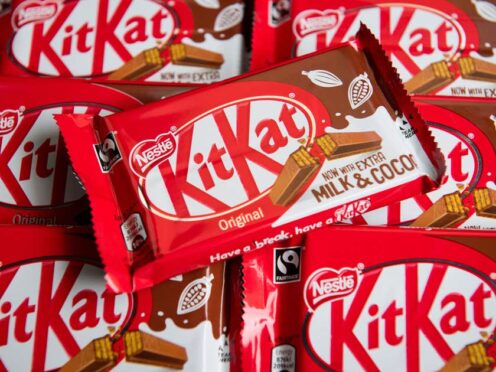‘Tis the season of mists and mellow fruitfulness and we have all the edible autumn fruits in the garden picked, with the exception of the crab apples on Butterball to be harvested anytime now.
This season, we have seen some marvellous crops of berries, edible and inedible, and as you must know by now, I am particularly fond of our native Rowan (Sorbus aucuparia) as a garden tree, and that includes a range of varieties derived from it.
There is a significant selection of other species in the Sorbus family worth checking out notably, S. vilmorinii, S. cashmeriana and S. hupehensis to mention a few that berry well. The star of the others, however, has to be the Swedish Whitebeam – Sorbus intermedia. It berries regularly carrying sizeable bunches of orange red fruits. Remember too, as well as being compact and of modest proportions, these Rowans are very tolerant of town conditions such as atmospheric pollution.
Thoughts of the lovely berries of the Rowan and its cousins brings me to the annual problem of what fruits are or are not poisonous. How can you tell? Unfortunately, there is no answer that suits all. I might have been tempted to say that the fruits of plants belonging to the Rosaceae family would not be poisonous although some might give you a sore belly, until I heard the tale about the chickens. I don’t know all the members of the Rosaceae family but did you hear the one about the cherry stones which are a source of prussic acid? It is recorded that they caused deaths in a flock of American chickens. Cherries belong to the family Rosaceae.
The problems arise, not just with children or someone who is a bit ingenuous, but because brightly coloured berries do look very inviting and appetising. Of course they are, that is precisely how in the big wide natural world seeds get dispersed in a very natural way. In other words, fruit that are poisonous might LOOK LIKE something that is quite harmless, it could even be a relative of something which is known to be safe to humans, but beware.
The red-berried Bourtree Bush (Sambucus racemosa), is a close relative of the Elderberry which has flowers and berries that can be used for wines and preserves, but the red berries of the Bourtree are poisonous. We know about Deadly Night Shade with its little blackberries like blackcurrants – fortunately the name should give the game away, however you might have a Daphne mezereum in the garden? Beware – the berries, at first green, but turning red, just like redcurrants, are not good for you.
Fortunately, in many gardens there will be a healthy population of birds to scoff them before they even ripen, and believe me, they disappear very quickly.
My point is, however, there have been cases reported of humans being taken seriously ill from ingesting very few of these berries.
I don’t want to give you sleepless nights, nor do I want you to start clearing out potentially poisonous plants from your garden, because believe me, you might be left with a bit of a desert.
Just be cautious and circumspect, and more to the point, take time to teach unsuspecting children what is safe and what is dodgy. Firstly, of course, it behoves you to be aware that there are a few attractive fruits on shrubs and trees in the countryside and in the garden at the present time which can be poisonous. Vitally important that you ‘luk efter yer ain furst!’ meaning if there are children or grandchildren about.
Sticking with trees and shrubs, among the stars of the show right now is the Cotoneaster family. As I write I am looking out at a mature Cotoneaster salicifolia – about 4m high and covered in red berries (much enjoyed by the blackies but not humans!).
Next to it is a less well-known shrub from Canada and N America – the Black Chokeberry (Aronia salicifolia) a handsome shrub with clusters of white flowers in spring followed by small bunches of edible black fruits. They are rich in fibre and vitamin C as well as containing powerful antioxidants.
It had a fine crop of fruit this year but they are long gone. The problem is, we tend to leave these fruits till they are what we call “drop ripe”, but the birds are attracted to them almost as soon as they start to turn colour.
